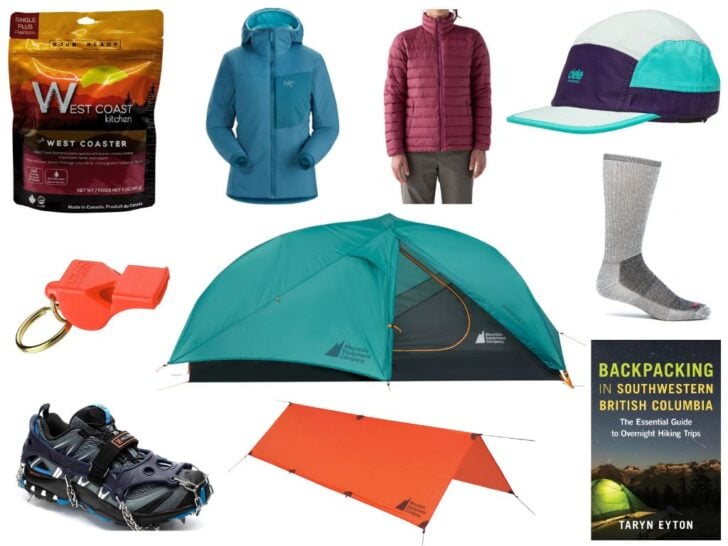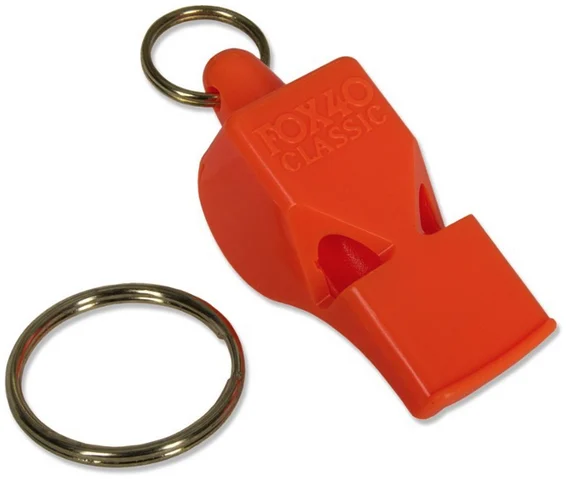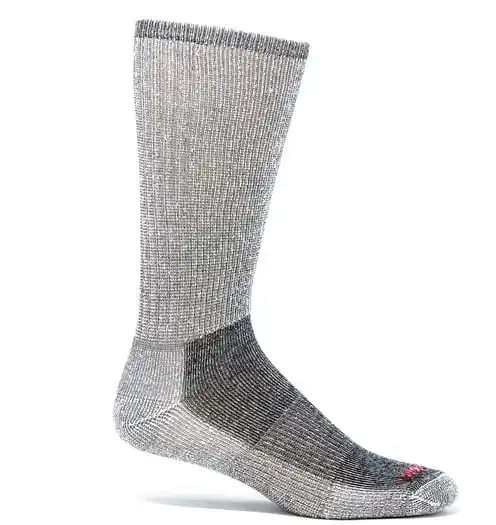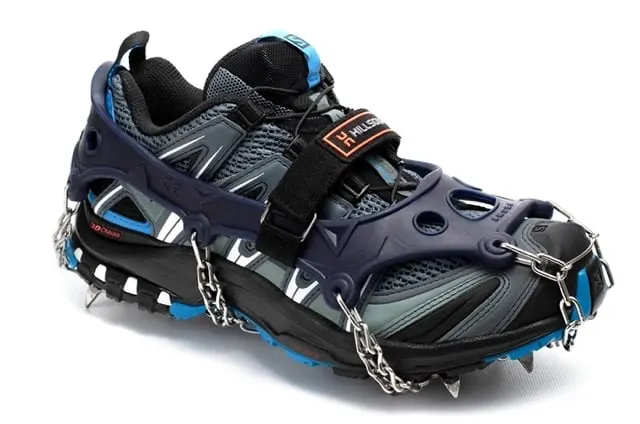If you’re shopping for a hiker this holiday season, I encourage you to support local companies and purchase Canadian hiking gear gifts for your loved ones. It’s a great way to show your patriotism, bolster the Canadian economy, and give a gift that the hiker on your list will love.
I’ve been hiking and backpacking for over 20 years, I’ve written two hiking guidebooks, and I spent over a decade working in outdoor retail (including seven years as a copywriter at a head office), so I know a ton about hiking gear.
Everything on this list of Canadian hiking gear gifts are things that I have personally used and loved. No gimmicks or stupid gadgets – just quality gear from Canadian companies that I want to support. (Check out my list of Canadian hiking gear brands for dozens of other companies you can buy from.)
I’ve got a variety of recommendations from budget to splurge, so there’s something for everyone.
Hey there: I bought most of the gear in this post with my own money, a few a products were gifts from brands. I also received lots of other gear that didn’t make the cut so you can be sure I only share info about products that I really use and love. As well, some of the links in this post are affiliate links, which means I earn a small commission at no cost to you. Thanks for your support. -Taryn
West Coast Kitchen Backpacking Meals
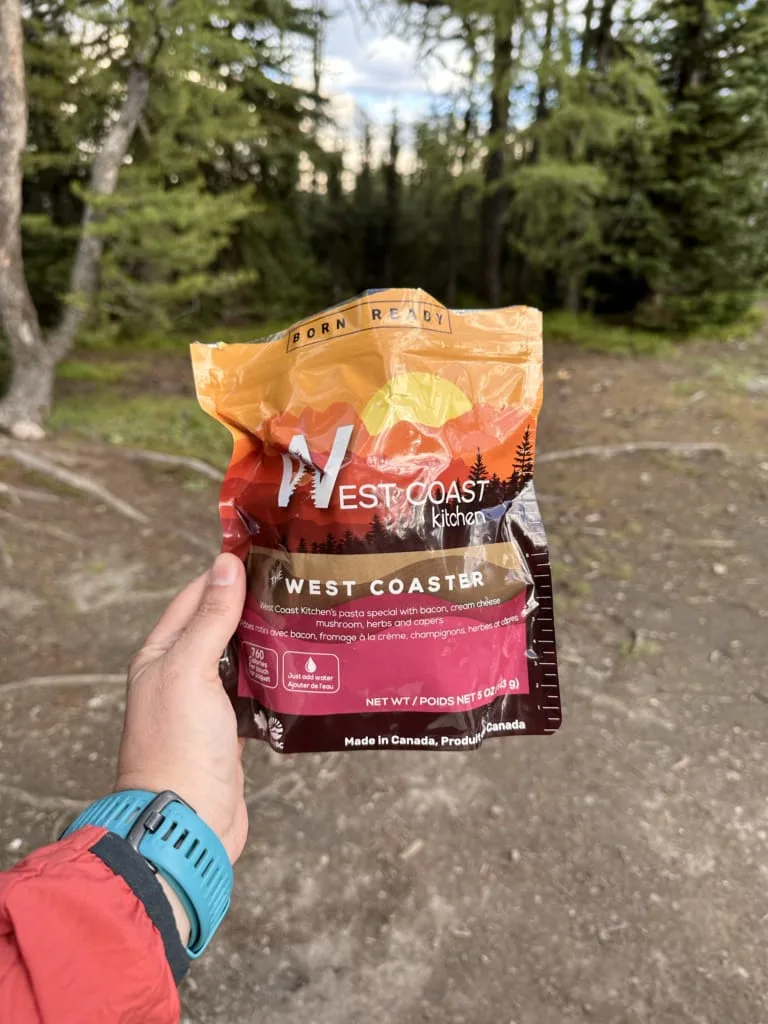
I’ve tried a lot of backpacking meals, with varied results. In the last few years, a few different Canadian companies have started making their own backpacking meals.
So far, I’ve tried Nomad Nutrition (Vancouver) and Happy Yak (Quebec). I also have plans to try Wanderlust Kitchen (Ontario), and SLY Foods (Quebec).
But my favourite meals I’ve tried to date are from West Coast Kitchen on Vancouver Island. In particular, their West Coaster pasta is amazing – creamy sauce with mushrooms, capers, and bacon!
Their meals are freeze-dried instead of dehydrated, which means they are more flavourful and rehydrate faster.
MEC Spark UL Tent

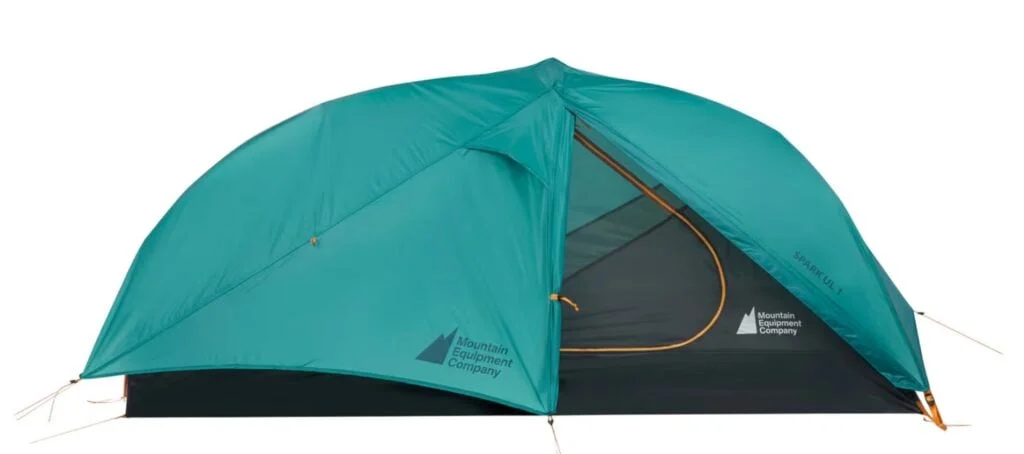
I own quite a few tents, including some expensive ultralight ones (Big Agnes Copper Spur and Zpacks Triplex). But by far the best value for features tent I own is the MEC Spark UL tent. I have the 1-person version and use it on solo trips, but they also make 2-person and 3-person versions.
Yes, it’s not lighter than an ultralight single-wall trekking pole tent that uses high-end Dyneema fabric. But it is crazy light for a conventional double-wall free-standing tent. The 1-person version weighs just 979g. It also packs down super small, which my husband loves when he takes it bikepacking.
Not only is it lighter than its biggest competitors (Big Agnes Copper Spur and MSR Hubba Hubba, both of which I own and love), but it is significantly cheaper, too. Plus, it’s made by MEC, a Canadian company headquartered in Vancouver.
It also has a few thoughtful features that I love. Instead of a zipper on the vestibule, it uses tiny magnets, which I find so much easier to use. It also has a great stuff sack that rolls up and then cinches, so I can get it packed up super tight.
Fox 40 Classic Whistle
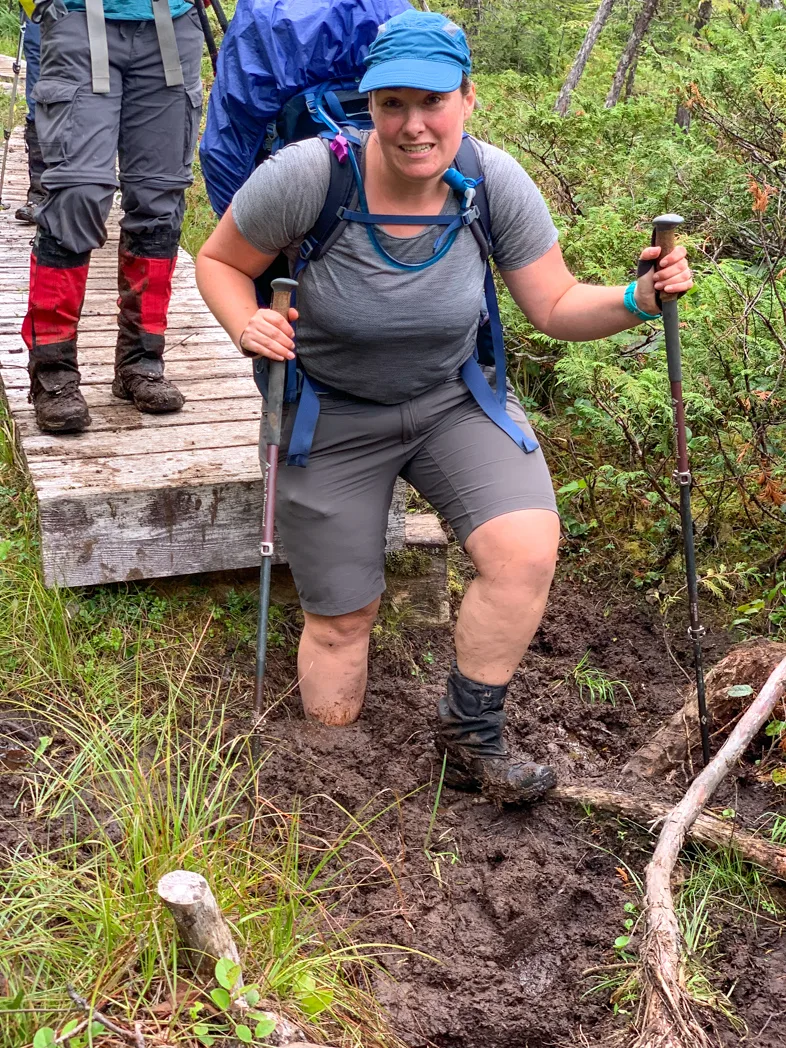
I have a Fox 40 Classic Whistle attached to the shoulder strap of every backpack I own. They cost just a few dollars and are super loud. They also work well when it’s wet or freezing out.
Many people don’t know this, but a signal whistle is one of the best pieces of safety gear for hikers – it’s part of the 10 essentials that you should bring on every hike. Your voice doesn’t carry very far, and you’ll get hoarse if you shout for help for too long. But you can comfortably blow a loud whistle for hours!
Fox 40 has been making whistles in Ontario since 1987. The company is owned and run by the Foxcraft family, hence the “fox” in Fox 40.
J.B. Field’s Super-Wool Hiker GX Socks
J.B. Field’s is the flagship brand of the Great Canadian Sock Company, which has been making socks in Ontario since 1934. My husband loves their Hiker GX Merino Wool hiking socks. I find them a bit thick for summer use, but I wear them in the winter.
These socks are made of 74% merino wool, blended with nylon and spandex. I find them super durable, and the knitted band across the middle of the foot provides a great fit.
The biggest advantage of these socks is the price. They are easily $10 to $15 cheaper than popular merino wool socks from Smartwool or Icebreaker. And they are made in Canada! You can’t go wrong with these as a Canadian hiking gear gift.
Ciele Athletics GoCap or ALZCap
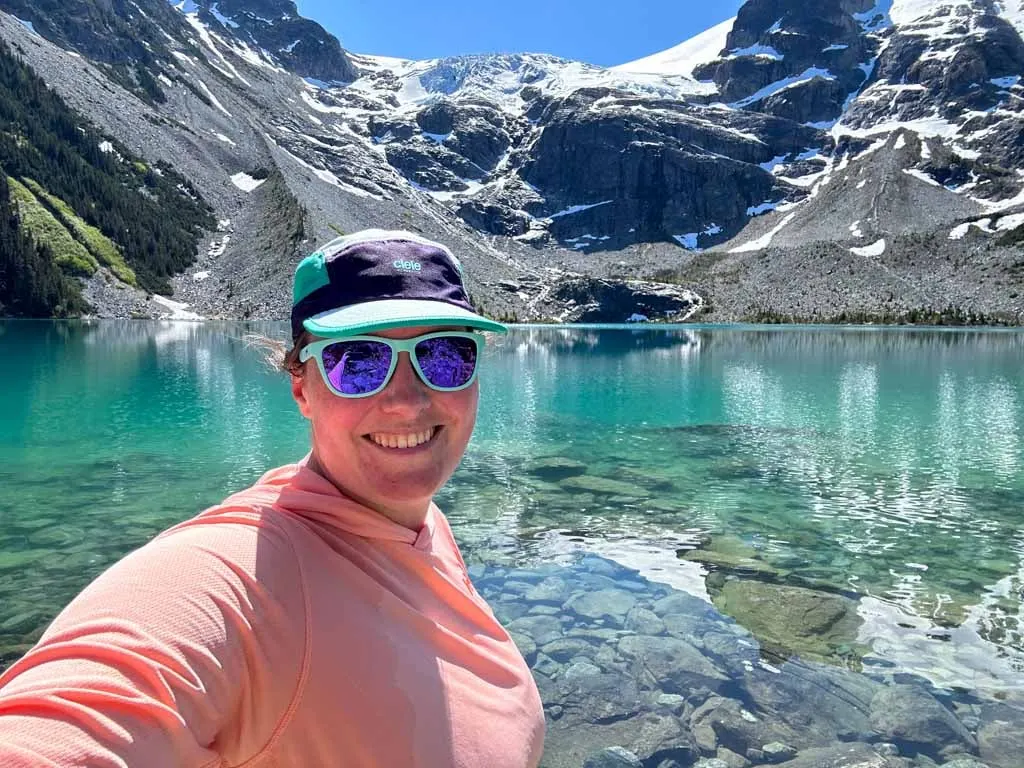
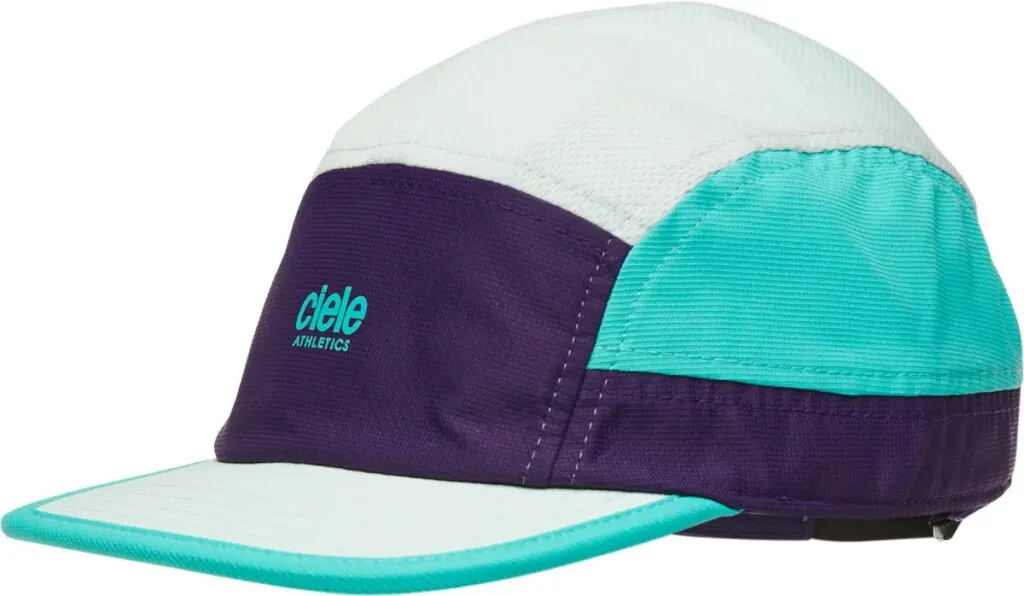
Ciele Athletics is a Montreal-based running brand. After recommendations from a few friends, I tried out their running hats a few years ago. Honestly, these are the best baseball cap-style hats I’ve ever worn for hiking. I now own three of them!
There are a few reasons why I love these hats: First, they are incredibly lightweight. Second, they breathe well, so I don’t overheat. And lastly, and probably most importantly for me, they wick sweat well, but they also dry really quickly. I found that other hats soaked up water and stayed wet and clammy for hours.
I wear one of these hats on pretty much every hike or backpacking trip. If you look through my site, you’ll notice my brightly coloured Ciele hats in every photo of me from the last few years. I have both the GoCap (full-length brim) and the ALZCap (shorter brim).
MEC Boundary Light Down Jacket or Vest

I always appreciate how Vancouver-based MEC makes more affordable versions of high-end gear. Their Boundary Light Down Jackets and Vests are a great example of that.
The Boundary Light series uses 700 fill-power down that meets the Responsible Down Standard for animal welfare, which means that the down is traceable and the ducks and geese were never force-fed or live plucked. Typically, you only find RDS down in higher-end garments. (Budget brands don’t talk about where their down comes from.)
In my experience, MEC is also pretty generous in the amount of down they put in their jackets, even lightweight ones like this one. That means that you get a lot of warmth for the weight. I’ve had the vest for a few years, and I’m impressed with how small it packs down and how warm it is.
These jackets and vests are great as a lightweight packable layer you can stash in your backpack, then put on when you stop. I often bring mine on summer trips to wear at night in camp or on fall hikes to layer over a thermal shirt or a fleece.
Hiking Guidebooks
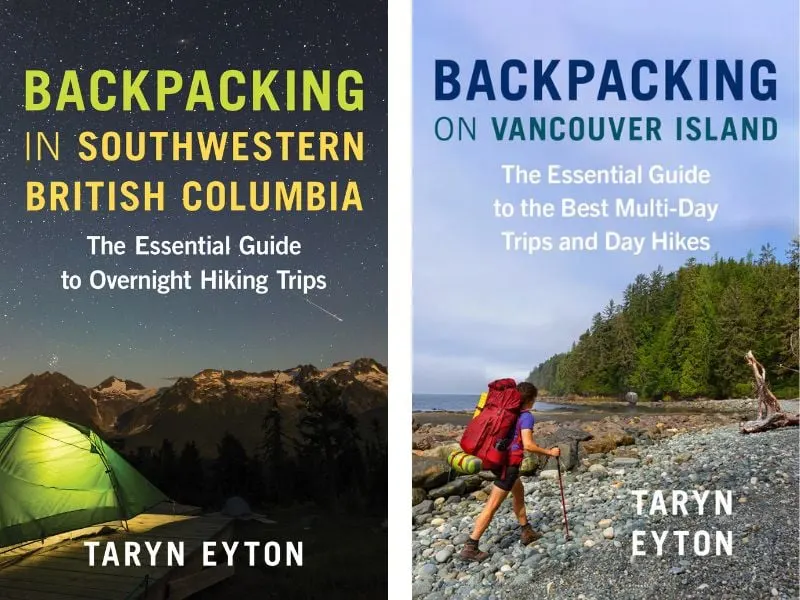
Most hiking guidebooks for Canadian destinations are produced by small Canadian publishers. For example, my books were published through Greystone Books, a small publisher in Vancouver.
Supporting hiking guidebook authors is a great way to buy Canadian gear. You’ll get a curated list of hikes and insight from a knowledgeable outdoor writer.
If you’re looking for overnight and multi-day trips near Vancouver, may I suggest my book Backpacking in Southwestern British Columbia? It includes 40 trails within 3 hours of Vancouver and has a variety of trips from easy to very challenging.
Or pick up a copy of Backpacking on Vancouver Island, which I also wrote. It has 35 trips all over the Island, including classics like the West Coast Trail and lots of under-the-radar trails you might not have heard of.
Hillsound Trail Crampon Ultra
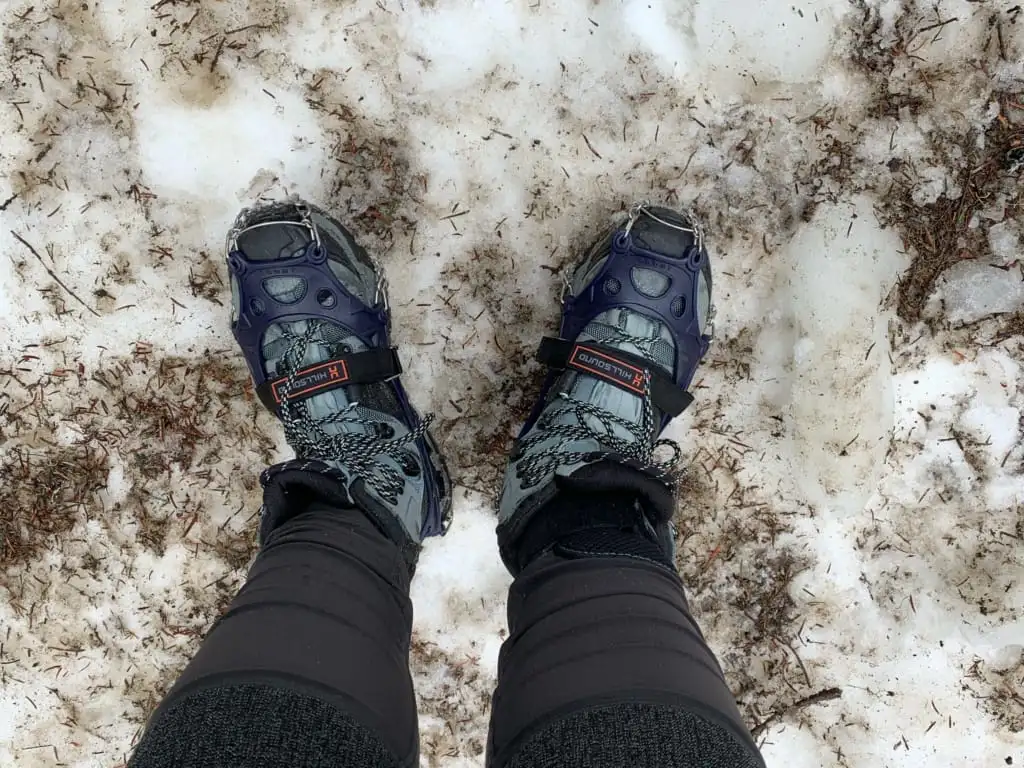
Here on the West Coast, we get a lot of snow in the mountains each winter, but it is wet snow that is subject to frequent freezing and thawing. That means that the snow is often crusty and icy, so local hikers turn to microspikes more often than they wear snowshoes.
(Read my guide to microspikes vs. crampons vs. snowshoes for tips on when to wear each of these pieces of snow gear.)
I end up wearing my microspikes a few times a week between December and March so I can hike on my local trails here in Squamish.
Vancouver-based Hillsound makes my favourite microspikes – I like them better than the classic Kahtoola version. I prefer the Hillsound Trail Crampon Ultra spikes because they have a velcro strap across the forefoot, so I don’t have to worry that they will fall off. The strap also helps me get a better fit with both my trail runners and my big winter boots.
The Hillsound Trail Crampons also have 18 spikes underfoot compared to just 12 on the Kahtoolas, so they have a stronger bite underfoot. And they are a few dollars cheaper!
MEC Scout UL Silicone Tarp

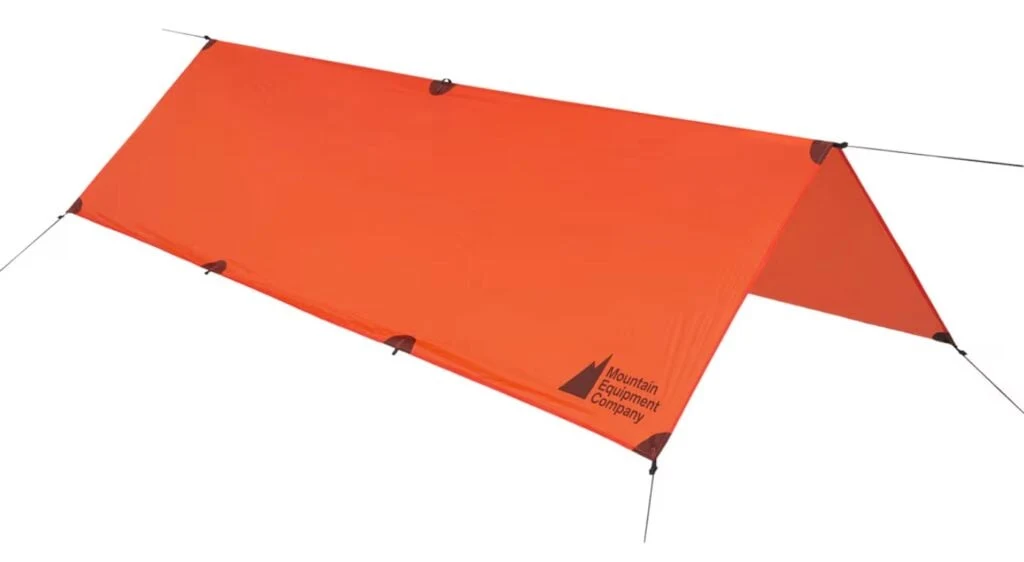
I’ve been bringing a lightweight silicone tarp on group backpacking trips for decades. Recently, I upgraded to the MEC Scout UL Silicone Tarp in the large size since my 20-year-old tarp was frayed beyond repair, and I wanted to support MEC, a Canadian company. Plus, the price was pretty low for a tarp like this.
It’s big enough to shelter 5 or 6 people for cooking or hanging out in the pouring rain. It saved my backpacking trip on the Skoki Loop last summer since we had afternoon/early evening thunderstorms every day.
A tarp is such a game-changer on multi-day trips. It gives us a guaranteed dry spot to cook and hang out. It also means that we don’t get as cold and wet while cooking. But the biggest difference for me is the morale boost. Instead of getting bored in my tent by myself when it rains, I can hang out under the tarp with my friends, chatting and playing cards.
The MEC Scout UL Silicone Tarp weighs only 415g and packs down to the size of a grapefruit. It has lots of reinforced loops that let you rig it in lots of different configurations.
And it comes with 6 lightweight guylines with tension lockers to get you started. (I still recommend using a few NiteIze Figure 9 biners for the easiest pitch.)
Note: Get the silicone version, not the original Scout tarp. The silicone version is soooo much lighter and more compact. It’s worth the extra money.
Arc’teryx Proton Hoody
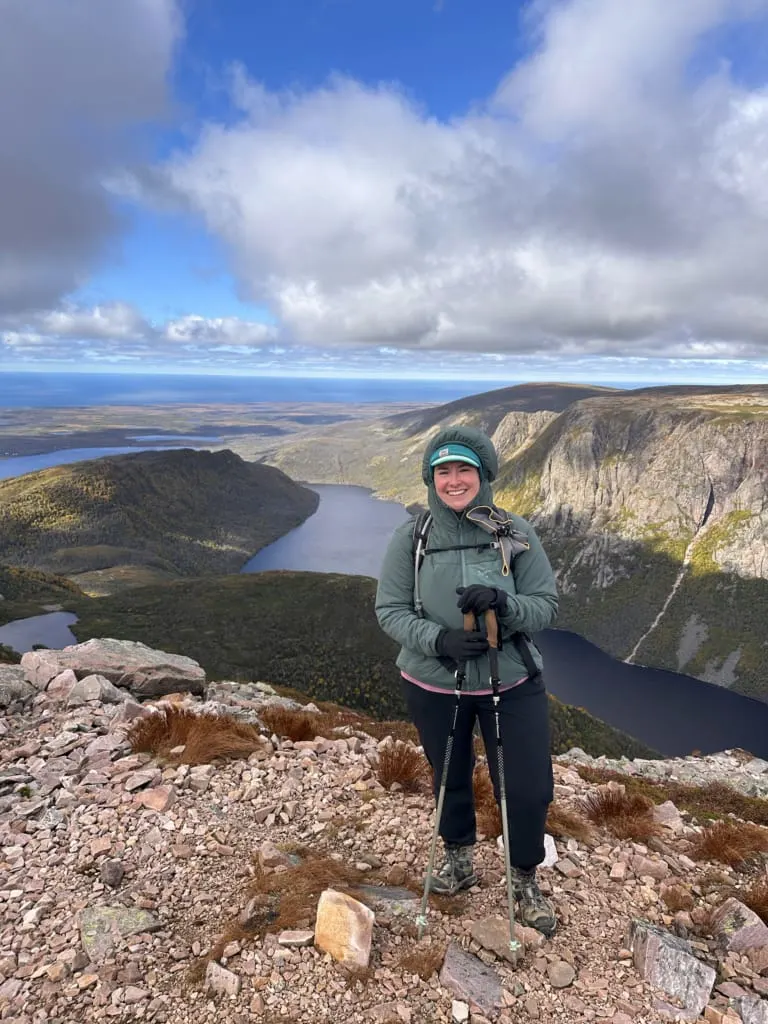
The Arc’teryx Proton Hoody is the insulated jacket I reach for the most – it made my list of my favourite gear of 2024. It’s warm without being bulky, and it’s great in all kinds of weather. This is a high-end and technical jacket, designed in North Vancouver, but I wear it so much that the price is worth it.
It uses synthetic insulation and fabric that is really breathable. That means I can keep it on when I’m hiking uphill or working hard, and I won’t overheat. It has more insulation than a lightweight jacket like the Arc’teryx Atom, but it isn’t a full-on parka.
The PrimaLoft insulation has a water repellent treatment, so it doesn’t soak up sweat, and it dries really quickly.
I also like the soft lining fabric, cozy stretchy cuffs, and adjustable hood. It also has a feature that I think more jackets should have: the pockets are set behind the insulation, not in front of it, so your hands stay warmer.
(Note: Arc’teryx has been based in North Vancouver since their inception, but these days they are owned by a parent company that is Finnish and Chinese, so they aren’t purely Canadian.)
Final Thoughts
These are just 10 of my fave Canadian hiking gear gifts that I personally recommend. My big list of Canadian hiking gear brands has lots more options.
READ NEXT:
- Canadian Hiking Gear Brands to Support
- 40 Best Gifts for Backpackers
- Stocking Stuffers for Hikers Under $25
- 20 Ways to Save Money on Hiking Gear
- 10 Best Canadian Hiking Gear Gifts in 2025 - November 12, 2025
- The Best Eco-friendly Gifts for Hikers - November 12, 2025
- Best Gifts for Snowshoers in 2025 (25+ Ideas) - November 12, 2025

